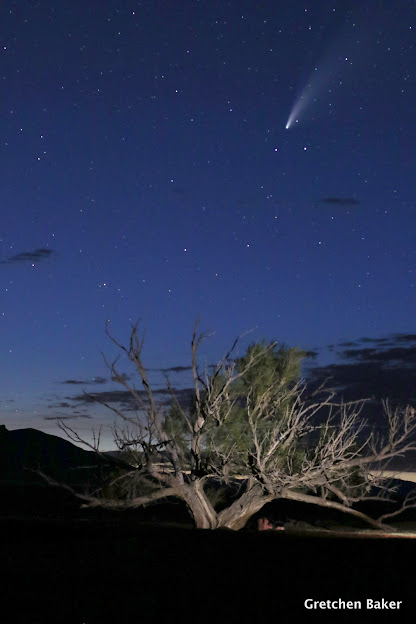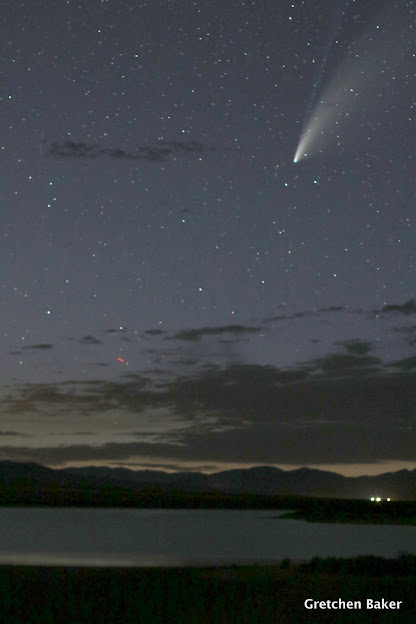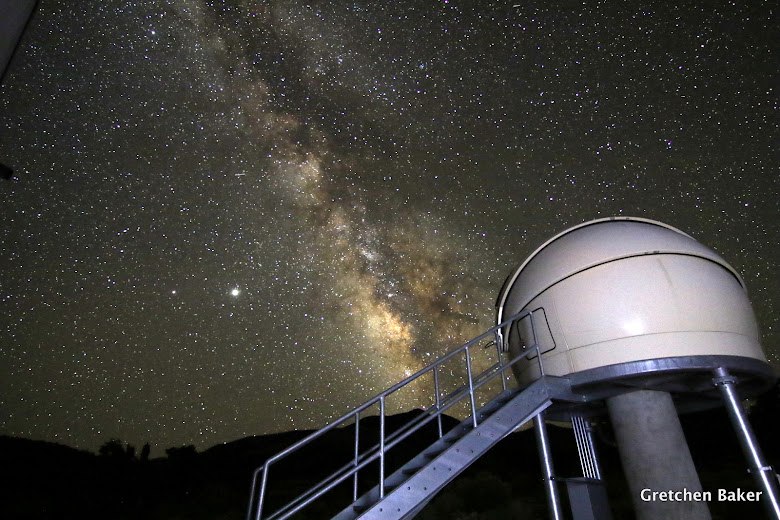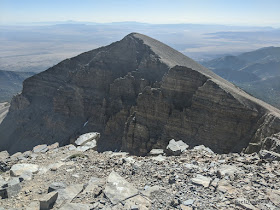I parked at the Grey Cliffs Campground entrance, at the north end of the map. Then I headed downhill (east) to the Pole Canyon Picnic Area, crossed the bridge over Baker Creek, and started up the Pole Canyon trail. The trail starts in pinyon juniper woodland, but before long it transitions to a riparian area with aspens and nearby white fir.
The horsetails along the edge gave some extra indication of the tiny stream that flows along sections of the canyon.
Then the trail comes out into shrub-grasslands, with a scattering of ponderosa pines and aspens ahead. A cloudy sky helped it from getting too hot.
Finally I could see the trail sign that indicated I was going to turn west and head up and over the ridge.
From the sign it's shorter to get to the Baker Creek Trailhead, which is a nice thought. The next part is uphill.
After going through some mountain mahogany, I reached the saddle. The clouds were cool over the backside of Wheeler Peak and Doso Doyabi, so I decided for a selfie, using the timer.
A little scarlet gilia provided a bit of color. It's not a great wildflower year, it's been too dry.

Then I headed down to the trailhead via the Timber Creek Trail and through Baker Creek Campground, which was completely full except for one walk-in site. There's a little trail between Baker Creek and Grey Cliff Campgrounds, and it is a delightful trail.
I saw so many flowers along it.
There are a couple cute little bridges...
...and butterflies...
...and flowers...
...the monkshood is at its peak...
The backlighting made the timothy look very cool.
And I went quite gaga over the streamside orchid. Orchids in the desert, it's such a delightful juxtaposition.
It's such a lovely trail. I didn't see anyone on the trails, just in the campgrounds. It's at a lower elevation, so early in the morning is a good choice in the summer. In spring and fall, it's often snow-free longer than most trails in Great Basin National Park. And in winter it's even possible to snowshoe or ski it. Enjoy!








































